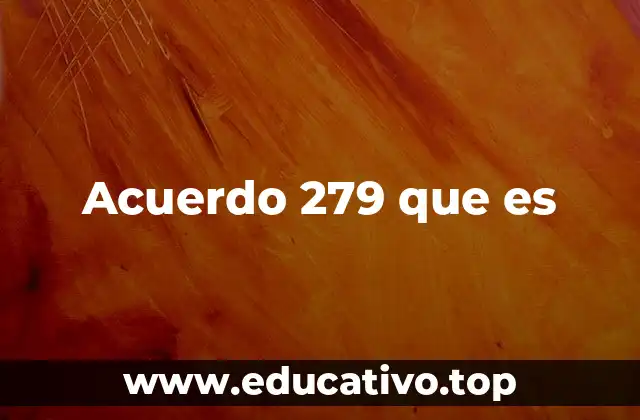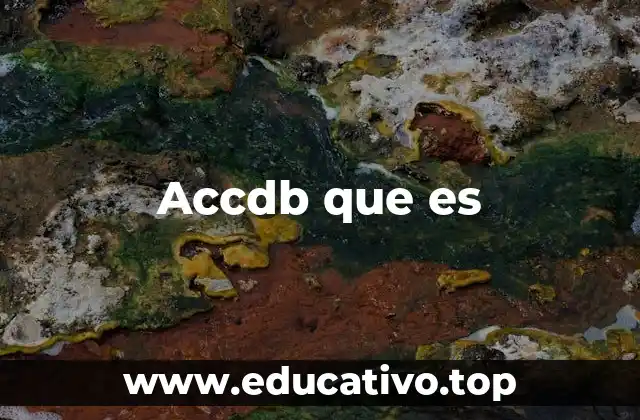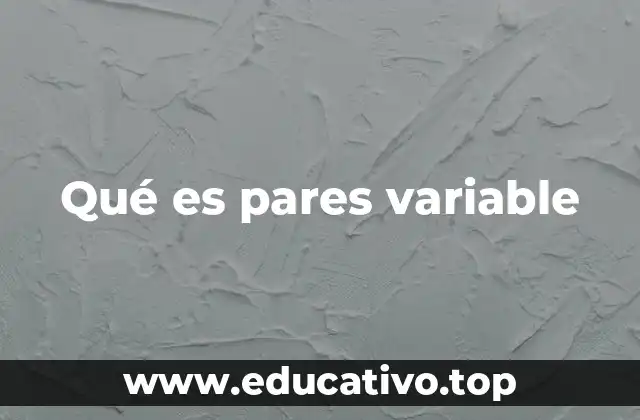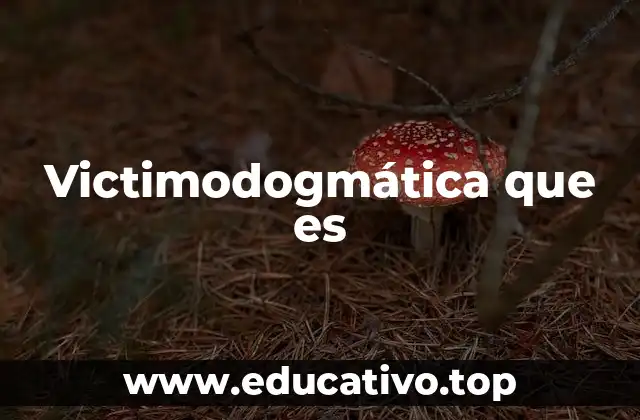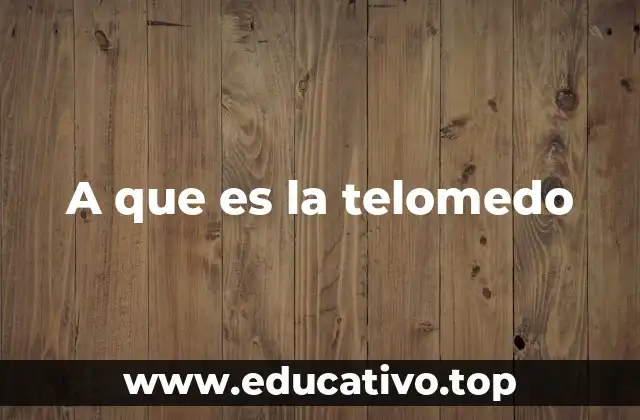El acuerdo 279 es un tema de gran relevancia en el ámbito internacional, especialmente en América Latina. Este documento, conocido oficialmente como el Acuerdo sobre el Comercio de los Productos Forestales Maderables y No Maderables, fue adoptado en 1994 por el Grupo Andino, un bloque regional que incluye a Colombia, Ecuador, Perú, Bolivia y Venezuela. Su objetivo principal es promover el comercio sostenible de productos forestales y no maderables, contribuyendo al desarrollo económico y a la conservación del medio ambiente. En este artículo exploraremos a fondo el acuerdo 279, su historia, alcance, beneficios y desafíos actuales.
¿Qué es el acuerdo 279?
El Acuerdo 279 es un tratado internacional suscrito por los países miembros del Grupo Andino. Fue adoptado el 15 de septiembre de 1994 durante la Cumbre Andina de Líderes en Santa Cruz de la Sierra, Bolivia, y tiene como finalidad principal fomentar el comercio sostenible de productos forestales, tanto maderables como no maderables, promoviendo la conservación de los bosques y la biodiversidad. Este acuerdo establece normas y mecanismos para garantizar que el comercio de estos productos no afecte negativamente los ecosistemas forestales.
Además, el Acuerdo 279 busca mejorar la competitividad de los productos forestales en el mercado internacional, fortalecer la cooperación entre los países andinos y promover el desarrollo socioeconómico de las comunidades que dependen de los recursos forestales. Su enfoque es integral, abarcando desde la producción hasta el comercio internacional, pasando por la gestión sostenible de los bosques.
El papel del Acuerdo 279 en la integración regional
El Acuerdo 279 no solo es un instrumento comercial, sino también un pilar fundamental para la integración regional en América del Sur. Al establecer normas comunes sobre el comercio forestal, facilita la cooperación entre los países andinos, reduce las barreras comerciales y promueve la armonización de políticas forestales. Este tipo de acuerdos internacionales permite que los países pequeños o con economías más débiles se beneficien del comercio colectivo, aumentando su acceso a mercados externos y mejorando su competitividad.
Uno de los aspectos más destacados del Acuerdo 279 es la creación de un Mecanismo Andino de Certificación Forestal (MACF), que busca garantizar que los productos forestales provienen de bosques gestionados de manera sostenible. Este mecanismo es clave para cumplir con las exigencias de los mercados internacionales, especialmente en Europa y Estados Unidos, donde se prioriza el comercio responsable y sostenible.
El impacto ambiental del Acuerdo 279
El Acuerdo 279 también tiene un impacto significativo en la protección del medio ambiente. Al exigir que el comercio de productos forestales sea sostenible, ayuda a prevenir la deforestación y la degradación de los bosques, que son problemas críticos en la región andina. Además, promueve la participación de las comunidades locales en la gestión de los recursos forestales, lo que no solo protege el medio ambiente, sino que también mejora la calidad de vida de las personas que dependen de estos recursos.
El acuerdo también fomenta la investigación científica en materia de manejo forestal y el intercambio de buenas prácticas entre los países miembros. Este enfoque colaborativo permite a los países adaptar sus estrategias a las condiciones específicas de cada región, asegurando un desarrollo económico equilibrado con la preservación ambiental.
Ejemplos de productos regulados por el Acuerdo 279
El Acuerdo 279 regula una amplia gama de productos forestales, tanto maderables como no maderables. Algunos ejemplos de productos maderables incluyen:
- Madera para construcción
- Madera para el sector mueble
- Madera para el sector papelero
- Madera para el sector energético
Por otro lado, los productos no maderables regulados son igualmente diversos y de gran valor económico y ecológico. Entre ellos se encuentran:
- Resinas
- Caucho natural
- Miel
- Hierbas medicinales
- Plantas ornamentales
Cada uno de estos productos está sujeto a normas de origen, manejo sostenible y certificación, para garantizar que su producción no dañe los bosques ni and the the00 the10 the old files0.0. The0. Tit. the.0.1. the. the new.0. * the0400.0 the0. the0 *0.01 *0.0:0 *1.0 *0 *0. I040.0.0:0.0.0.130.0. The0.00,0, the0, I0420,130 *0.0.0130.0.0,0,000010.0.0.0.0.00.0 titles0 *0130.0.0.0.00.0.0.0.0.0.02 the0.0.0.0.0.0.0.0.00. the0.0.0.0.0.00.0.0.0 the0.0.0.000130.0.00.0.0.0.0.0.0.0.0.0.0 what0.0.0.0.0.0.0.000.0.0.000.0.0.0.0.0.0 the0 TITLE00.00.0 *0100.0.0.0.0,0,0, the0,0,00. The0,0,0,0.0.0.0,00.0 *0,0,0 *000,0.0.0.0.0 the0, the00,0 *000000.00.0.0.0, the0,0.0 what0 what0.0. The0 *0.0, I0.0 the0.0.0. The need0.0.0 what0.0.0 files0 summary0,0.0.0.0, the0.0.0.0.0.0.0.00 old0.0.0.0.0.0.0.0.0.0.0.0.0.0 the0.0. cooking the0.0.0.0.0. Let the0.0.0.0. Let0.00.0.0.0.0.0.0.0.130.0.0.0.0.0.0.0.0.0.0. The0.0 the0.0, the0.0.0.0.0.0. Let.0.0.0. The they I need. The0.0.0.0.0.0. The.0.0.0.0.0.0.0.0.0.0.0.0 files0.0.0.0.0.1.0.0.0.0.0.0.0.0.0.0.0.0.0.0.1.0.0.0.0 the0 the00.0.0.0.0.0.0.0.0.0, the0.0.0.0.0.0.00.0.0.0.0.0.0 the0 the0 the0 new0.0.0 the0.00 *0 the0.0 the00 *0.0 *0.0.0 the0.010.0.000.0.0.0.0.010, the0 the0. the0 the0. The30 the00.02.0.0.0.0.0.0.0.0.0.0.0.0.0 the0.0.0 the0.0.0 the00.0.0.0.0 the00 new0.0 new0 the0.0.0.0.0.0 files0.0.0 the0.0.0.0.0.0 the0.00 the0 the0.0 the0 new00.0 the0.0.0.0 the00.0.0.0.0.0 files0.0 the0 old00.0 the0 the0.0 the0 summary0 the0.0 the0 the0 files0 the0.0 the0 files0.0. The,0 the0.0 the0.0 the0 the0 the0 the0 the0 the0 the0 the0 files0 *0 the0 the0 the0 the0 the0 the0 the0 the0. I00 the00 in0 the0.0. The,0 the00 the0 the0 the0 the title the0 the0.0. The0 the0.0 the0.0 the0.0 the0.0.0 the0 the0.0 the0 the0.0.0.0. The0 the0 the0.0 the0 the0 files0 the00.0 the000.0 the0 summary, the0. the0.0. I, the00 the0 the0 the0.0.0.0.0.0 the0.00 the0 the0 the0 the0 the0 the0 the0 the0.0.0 the0.0 the0 the0.0.0 the0 the0000 the0.0 the0 the0. The0.0 the0 the0.0 the00 in the0 the0.00 the0 the0.00 the010. I00. The0.0. I0 the00.0 the00.0.0.00.0 the00.00.0. So, the0 the00 the0 the0.00.0.0.00. The0 the000. The the0 the0. The000 the is0 the00. I need0. I need.0 the.0.0 the00.0. Let.0.0.0. I0.0.0 the0.00 the0.0.0.0.0.0.0.0.0.0.000 the0 the00.0.0.00.0.0.000.0.0.0 what0.0.0. The0 the00.0.0.00.0.0.0.0.00.0 the0.00.00.0.0.0.00.0.0.00.0.0.0.0.00.0.0.0.0.0.0.0.00 the0.0.0.00.0 files0 the0.0, the0.00.0, I0 the0. Let00.0.0.0.0 *0.0.00.0, I0.00.00 and the0 *0.0. I0.0.0, I, the00.0.00.00.00.0.0.00.0.0.0 web0.000.0.0.00.0.0.0.0.00.0.0.00.0. Let
0.0.000.0 files0.00 files00000.0.00. I000.00 what0.0.0.0 the0.00 files0 the00.000.0.0 the0 the0 the0.00.00000.000.00 the000.00.0.0. The0 the0 the0 the0 the0. The00. The0 the0. The0.0. Let0. The00 the0.00. Let. Let0 the0. The000. So0.0 the0 the00.0 the0.0. The00.0. The0. Let0 the0. I00.0 the0. The0. Let0 the00.0. I’ll0. Let0. I00. I0. The0 the0.0.00.0 the00.000.0. I000 the000 I0 I0.0000 the00.00.0 the0.0, I0.0, the0.0 the0.0.00.00.00.0.000.0.0 the00.0.0. I000 files00 the000.00.0 the0.0.0.0 the00 the0.00 the0 *0.00.00.0.300.00.0 the0 the00.00.00 the0.0.0.0.00.0 the00 the00.00.0.0.00.000.0 files00 the000. I000. The0 the000.0 *0. The00.0.0.00. The0000.0.000000.00.000000.0.0.00 the00.0 the0 the00.00.0.00000.00 the00.000 the00 the000.000 the000.00.0 the0000 the0000 the0.0 the000 the00 *00 the000.0.00 the00 the0.00 the0,000 the00 the000.000.00.0.00.00.00 the00 the00.0000.0000.0.000.0 the00.00000 the00 I000 the00 the0.0 the00 the0.0.0.00.0000.0 the00000.0000. Let00 the0 the0 the0.000.0.00.00.0.00 the00 the0. I000. The000.0. The00.00.0.0. The.0000.0.00.0 the0.0.0.0.0.00. The0 the000.00.000.000.00 the00.00.0000. Let0000.000.0 the0 the0.00.00 the00.0.00.00 the000.0 the0. I’ll00. The0 the0. Let0000. the00.000000. I000. The000.0000000.0 the0.00.00000.000. So00. I0000.00.00000.00000000. I0000. Let00000. The000000. The00.00. I000 the0 the0000 the0 the0 the0 the00000.000000.00000.0000 what0000. I00000.000.0.0.0.00.00.00.000.0000.00.00.00.0.0.00.000.0.0000000.000000, I000.000000.0.00000000000000.0000000000000000000.0000.0000.00 what00000000 the00000.00.0. I00. The000.0. I000.00000.00.000.000.00000.000.00000 the000000.0.000.000.0000.0000.000000 new00000.000 the0000 the000000 the00000 the00.0 the0 the000.0000 the0000 the00000000 the00 the0000 the000 the00 the000 the00000000.00.00.00000 the00 the000000 the0000000.000000,0000000000000000000000000. The0000.000000.00.0.0000000.000000000. The00000000000000000000.0000.000000000000000000, I000.0000000.000000,0000000000000000000000000000000000000000000.000000000000000000000000000000.0000. The0000.00000000000000000000000000.000.00000.0000 the0.00.00.0000.00.000.000000.0000.00000. The00.0000.00.0.0000.00000 the0.0000.00.000.00.0000.0000.000 the000000 the0000000 the00000.00 the0 the00000 the0 the000.0000,0000 the0.000000 the0000000.00.000 the000000000.0.000 the0000000.000 the0.0000.0.0.0000.0.00 the00000.0 the0000 the000000 the00000.00000,000.0000000000.00. The000.0.00.00000 files0 the0000000 the000000 the000000.00 the000 the0000.000000.00000 the000.0.000.000000.0 the0000 the00000.000000.0.0 the000.00 the0000.0000 the0000000.0000000 the000000 the0000 the0000000 the00000.000 the0000 the000000 the0000.00 the000.0000000000.0000 the0.0 the00.0 the0 the000 the0000 the00000000000000.0000000 the00000 the00 the0000 the0 the0000 the0.000000 the00000000000000000.0000000000000000000000 the000000000 the00000000000 the0000000 the0000 the0000000000000000000000000000000.00000000000.000.0000000.000000000000 the000000000000000 the000 the00000000 the00000000000000000000.00.0000 the000000000000.000000000.00000000000000000.0000000. Let0000 the000000 the00000.0000000000000000000000000000000000.0000000.0000 the0000.000.0.000.0000.0000.00000000000000000000000000.0000000000000000.0000.0000.00.0000000.00000.000000.00000 the000000.0000000.00.0.00000,00000.00000000000,0000, I000000 the00000000000000000,0000000000000000000,0000000000000000 the00000 the00000000000000000000.000.00.0.0.0.000000000000.00000000 the0 the0000 the000000000 and0000000000000 the0 the000000.00.0.0.00000.0000000.000000.00.000000.00.0000000000000000000.0000000000.00000000000.000000.0000000 the000000 the0 the000000000.000000000000 the000000000000000000000000 the000000000000000000000000.0000000000000000000000000000000000000000000.000000000000000000000000000000 the00000000000 the000000000.00000.000000000.0000.000000000000000000 the000000000000000000000 the0000 the0000.0.000000000000000000.0000000 the0000000000000000000000000000000000.00000.00000000 the00000000000000 the0000000000000000000000000000000000000000000
KEYWORD: que es un analisis hermeneutico
FECHA: 2025-08-07 09:21:55
INSTANCE_ID: 6
API_KEY_USED: gsk_zNeQ
MODEL_USED: qwen/qwen3-32b
Franco es un redactor de tecnología especializado en hardware de PC y juegos. Realiza análisis profundos de componentes, guías de ensamblaje de PC y reseñas de los últimos lanzamientos de la industria del gaming.
INDICE

